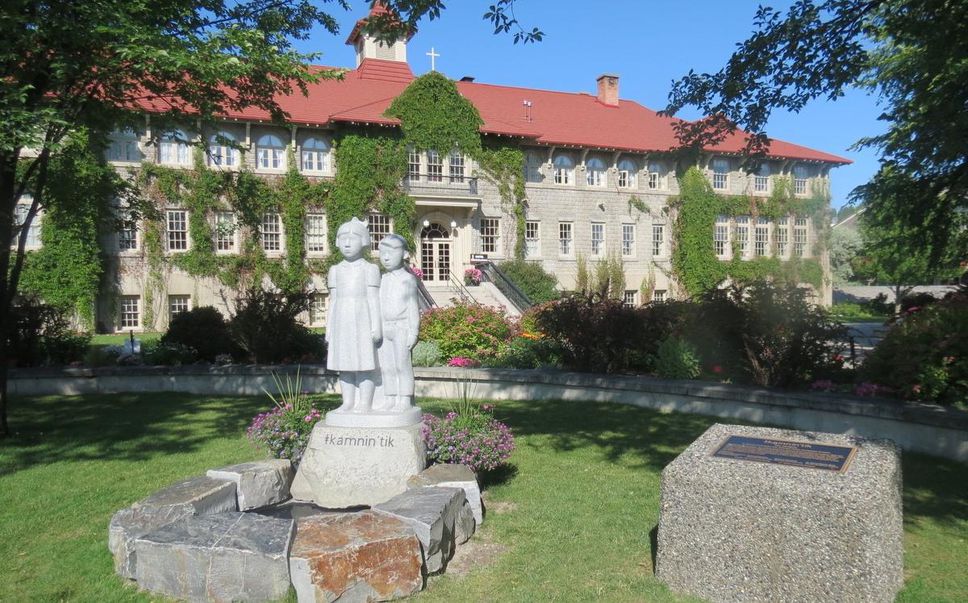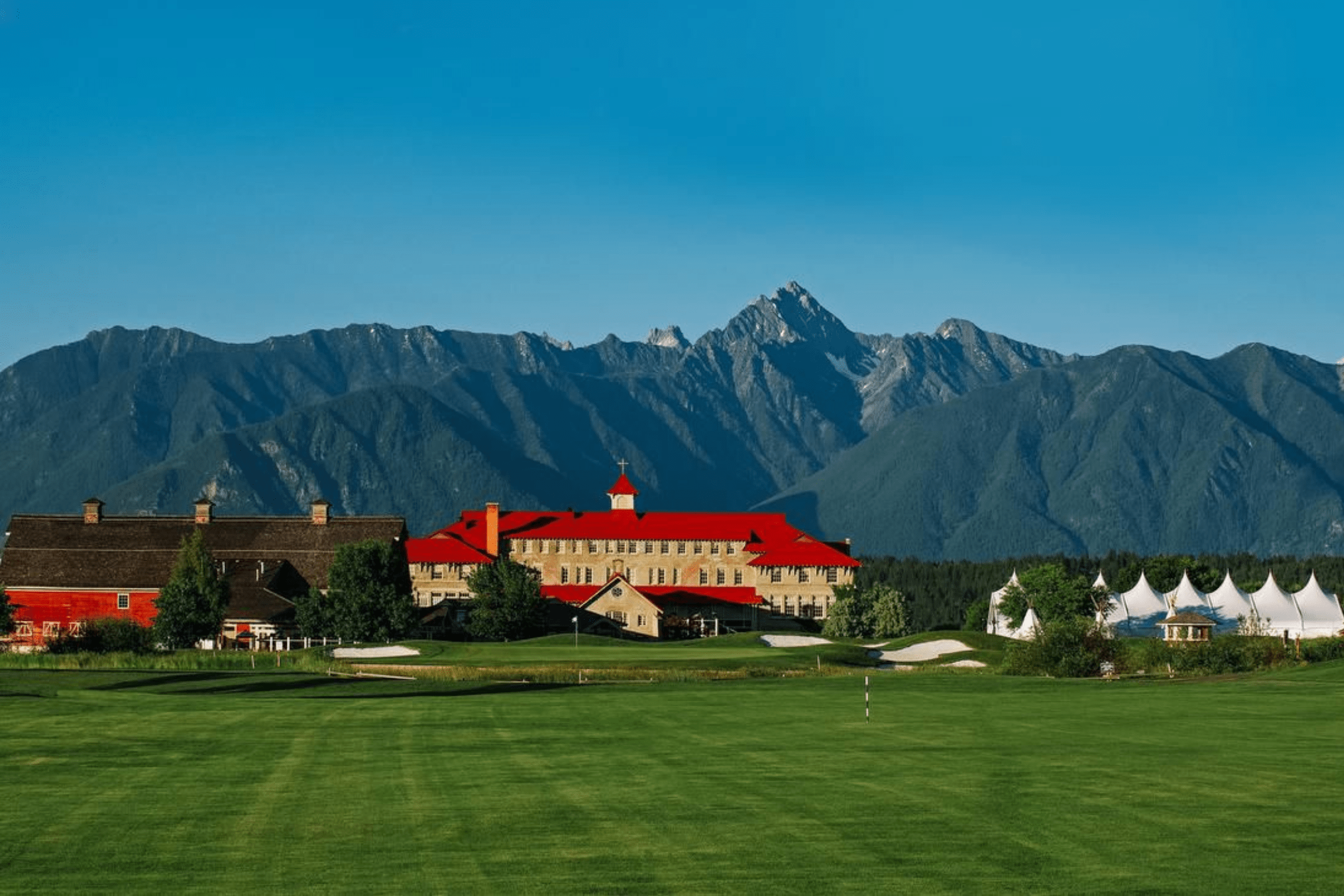Around the World
The Spectacular Mountain Resort in Cranbrook, British Columbia
Jan 2023 | By Pat Brennan
A spectacular mountain resort near Cranbrook, B.C., has a championship golf course, award-winning dining room, a large casino, a destination spa, and a popular conference centre. It also has a tragic and cruel heritage.
From 1906 to 1970 the beautiful red-brick building of St. Eugene Mission was a residential school for Indigenous children — where Catholic nuns and priests worked to beat, scare, intimidate, harangue, threaten and scream Indigenous language and culture out of the heads and memories of young students.
On the first day of school in September, the students’ hair was cut. They were separated from their siblings, their moccasins burned, their Indigenous attire confiscated, and they were 300 kilometres from their family homes until June.
 After being closed in 1970, the three-storey building sat empty and neglected for many years. But Sophie Pierre, chief of the St. Mary’s reservation of the very entrepreneurial Ktunaxa people on the St. Mary’s River, persuaded many of her fellow residents that the school had potential to bring joy and prosperity to her people. Maybe, they could try to convert it from a nightmare to an asset.
After being closed in 1970, the three-storey building sat empty and neglected for many years. But Sophie Pierre, chief of the St. Mary’s reservation of the very entrepreneurial Ktunaxa people on the St. Mary’s River, persuaded many of her fellow residents that the school had potential to bring joy and prosperity to her people. Maybe, they could try to convert it from a nightmare to an asset.
It took more than 10 years, but St. Eugene Mission is now a successful enterprise that is 100 percent owned by Indigenous peoples.
The resort hosts many conferences — some of them involving Indigenous groups that include former students. The resort has several new buildings to host groups, banquets, weddings, etc. and 200 modern hotel rooms in a separate building.
Many former students refuse to enter the 113-year-old school portion of the resort. They are allowed to register for rooms, recreation, and conferences outside of the principal building.
Many former students have attended functions at the resort as adults and are proud of the reservation’s business achievement, but also admit they dream of filling each school room with dynamite and then pushing the plunger down.
There’s an emotional interpretation suite in the old school, where a 28-minute video records former students recalling the horrors of their school days.
Several students said the scariest sound at night was the rattling of the long rosary beads the nuns wore as they walked the school’s hallways.
Some students confessed to telling lies so they could get easier maintenance chores and better food — they told their teachers they hoped to become a nun or a religious brother.
Watching the video makes some guests scream in anger or weep broken-hearted.
The Ktunaxa (pronounced “k-too-nah-ha”) people have occupied the lands adjacent to the Kootenay and Columbia Rivers in southeastern British Columbia for more than 10,000 years
The Ktunaxa Nation includes four separate bands within B.C. — the Wood Land People of St. Mary’s, Two Lakes People of Columbia Lake, People Where the Rock is Standing of Lower Kootenay and People of Flying Head Place of Tobacco Plains. Another three bands of Ktunaxa are located in Alberta, Montana, Idaho and Washington.
 NUMA, the principal dining room at St. Eugene, is considered among the finest eating venues in the Cranbrook and Kimberley areas of B.C. Each August, the restaurant serves a ceremonial dinner on an outdoor table 250 feet long.
NUMA, the principal dining room at St. Eugene, is considered among the finest eating venues in the Cranbrook and Kimberley areas of B.C. Each August, the restaurant serves a ceremonial dinner on an outdoor table 250 feet long.
Among the facilities of the fully equipped gymnasium/spa is a heated outdoor swimming pool, accessible year-round.
The casino site is surrounded by soaring Rockies but doesn’t offer ski vacations. However, there are world-renowned ski resorts in nearby Kimberly, Cranbrook, and Fernie, all within an hour’s drive from St. Eugene.
St. Eugene’s Casino of the Rockies has a free shuttle service that will pick up and deposit guests from other hotels in nearby Cranbrook and its vicinity.
Two kilometres down the road from the resort is Fort Steele Heritage Town, one of British Columbia’s most popular tourist attractions.
The village conveys 1864 life in the B.C. Interior. It was a prosperous gold rush boom town called Galbraith. It was named after the man who owned and operated the only ferry crossing the wide Kootenay River for hundreds of kilometres.
While the gold rush created an influx of up to 5,000 settlers, by 1882, only 11 lived in the East Kootenay district, according to the Friends of Fort Steele Society. But with the completion of the Canadian Pacific Railway in 1885, settlers and prospectors were encouraged to venture into the region once again.
As more settlers arrived, disputes arose between them and the Ktunaxa over land ownership. Tensions reached a boil in 1887 when two Ktunaxa men were arrested for the murders of two miners, which took place almost two years before. Chief Isadore and 25 of his men broke the two men out of the jail (which at that time was in the back of the ferry office, as the government building was not constructed yet).
Renowned Canadian lawman Supt. Sam Steele of the Northwest Mounted Police came to Galbraith to investigate. After finding no evidence of murder or foul play, Steele had all charges against the Ktunaxa men withdrawn.
In appreciation of having settled this and additional land disputes, the locals petitioned the Dominion government to rename the town after Steele. As the Northwest Mounted Police had established a post there, it became known as Fort Steele (despite never being a fort at all).
All aspects of an 1860s life are depicted in the heritage town, including an authentic steam train that still takes passengers around the settlement.

